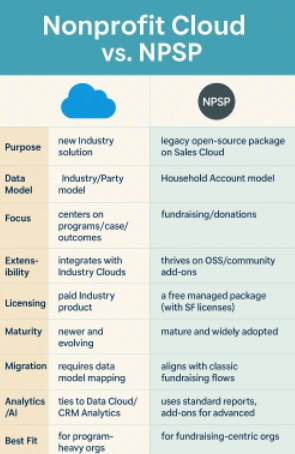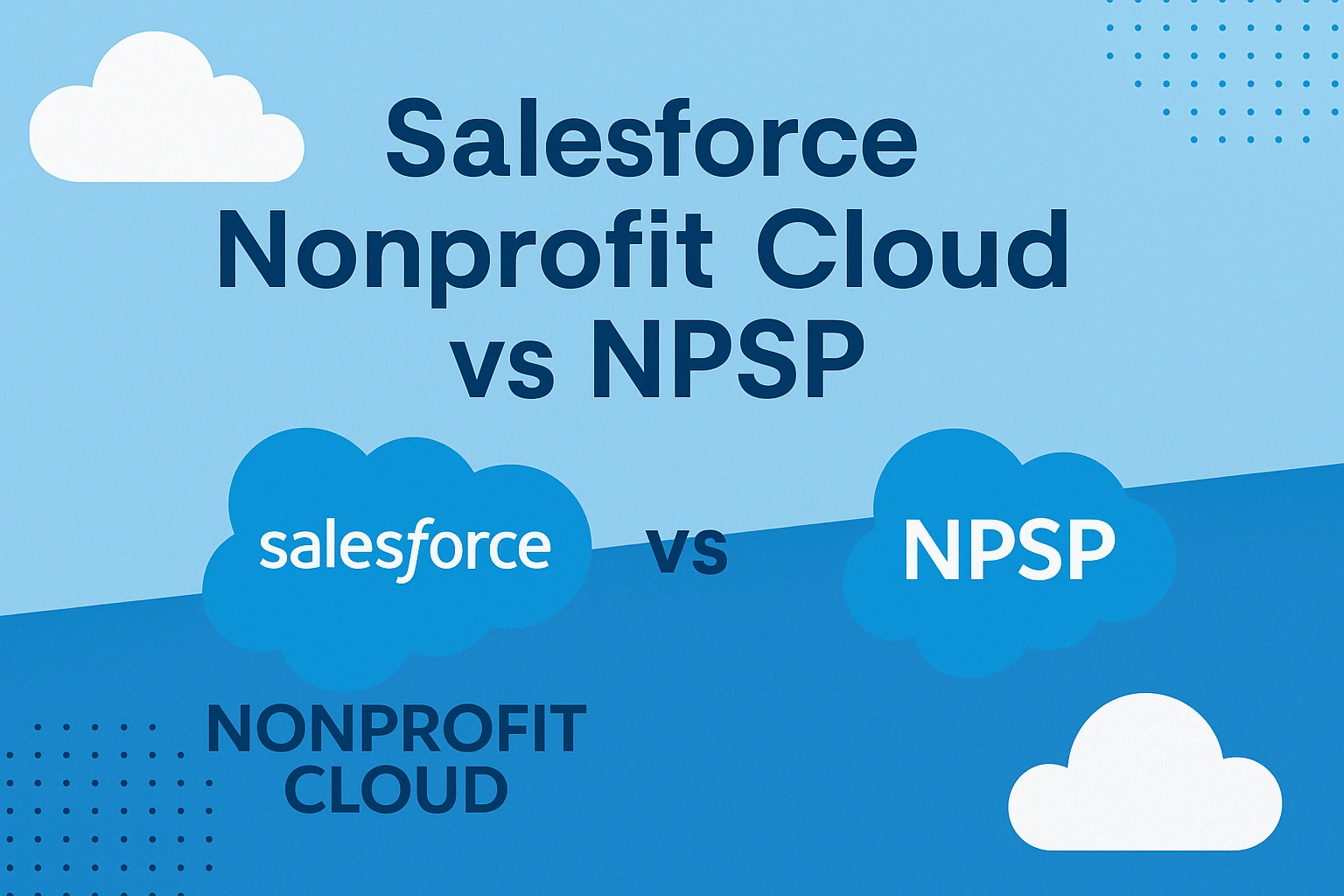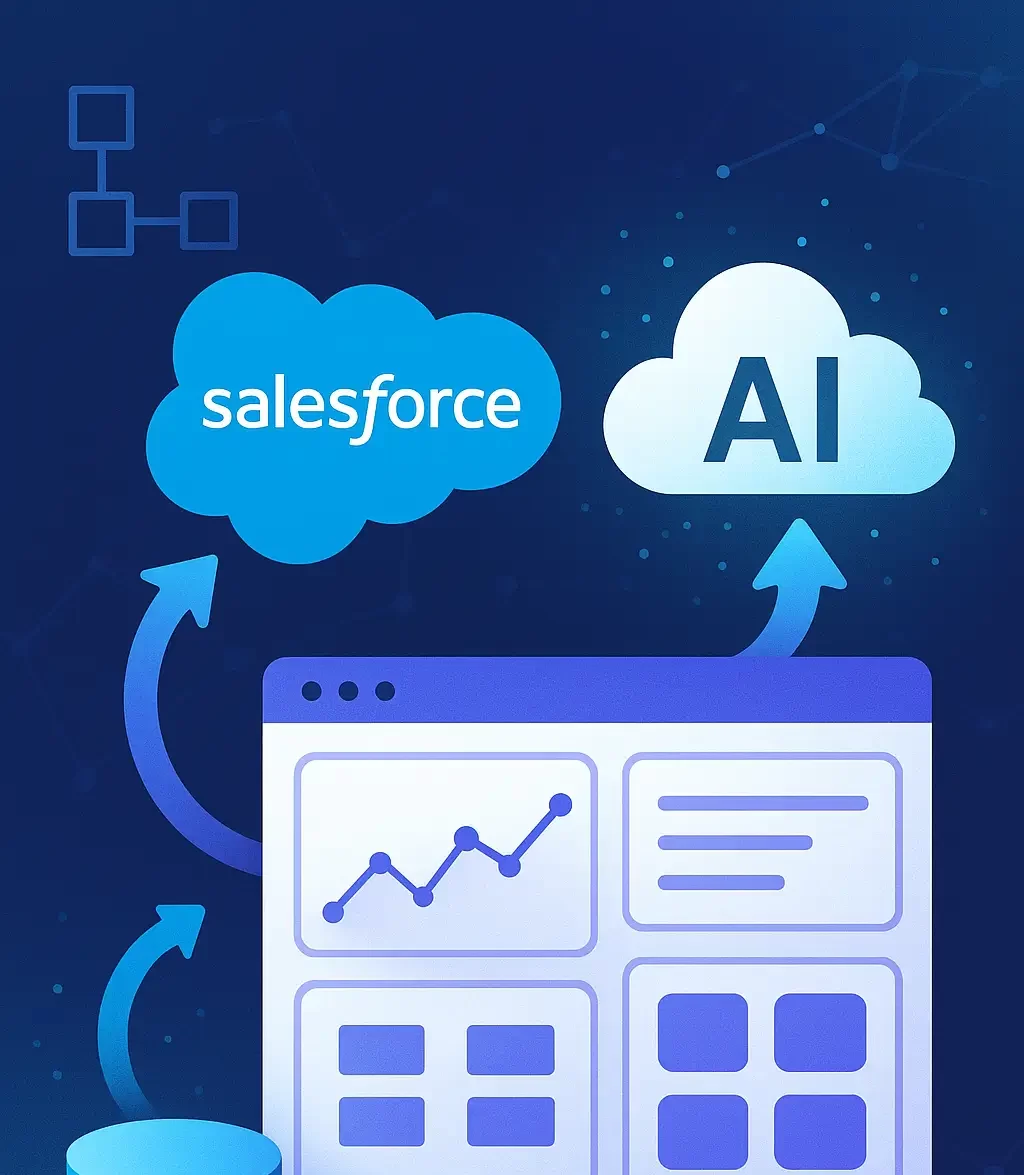Choosing between Salesforce Nonprofit Cloud and NPSP isn’t just about features—it’s about your organization’s future. Both platforms serve nonprofits, but they’re built on completely different foundations that impact everything from daily operations to long-term growth potential.
Let’s break down what makes each platform unique and help you decide which one aligns with your mission.
But keep in mind that no matter if you’re on NPSP or Nonprofit Cloud, you need a way to consistently collect and act on donor, volunteer, and beneficiary feedback inside Salesforce.
What Makes Nonprofit Cloud Different from NPSP?

Built-in vs Bolt-on Architecture
NPSP sits on top of Salesforce’s standard CRM like an add-on layer. It works, but it has limits when you need to scale or integrate with other tools.
Nonprofit Cloud is built directly into Salesforce’s core platform. This means better performance, smoother integrations, and fewer workarounds when your needs get complex.
Native Integration Capabilities
NPSP requires third-party connectors and custom development to work with other Salesforce clouds. You’re often juggling multiple platforms and hoping they sync properly.
Nonprofit Cloud connects seamlessly with Marketing Cloud, Service Cloud, and other Salesforce products without extra middleware. Your data flows naturally between systems.
Key Features Comparison
Donor Management and Fundraising
NPSP Capabilities:
- Household account management
- Basic donation tracking
- Soft credit allocation (manual setup required)
- Opportunity-based fundraising workflows
- Custom reporting dashboards
Nonprofit Cloud Advantages:
- Unified constituent profiles with AI-driven insights
- Automated recurring giving management
- Built-in grant management through Outbound Funds
- Predictive donor scoring
- Real-time impact reporting
The difference shows up in daily operations. NPSP handles the basics well, but Nonprofit Cloud anticipates what you need next.
Program Management
NPSP Limitations:
- Basic service tracking only
- Limited program outcome measurement
- Manual case management processes
- Requires extensive customization for complex programs
Nonprofit Cloud Features:
- Dynamic program planning tools
- Collaborative case management
- Integrated outcome tracking with SDG alignment
- Multi-phase intervention workflows
- Beneficiary journey mapping
If your organization runs multiple programs or serves diverse populations, these differences become critical. NPSP forces you to build everything from scratch.
Reporting and Analytics
NPSP Approach:
- Manual dashboard creation
- Standard Salesforce reporting tools
- Limited cross-program analytics
- Custom report development needed
Nonprofit Cloud Benefits:
- Pre-built program impact dashboards
- Einstein AI for predictive analytics
- Cross-program performance tracking
- Automated compliance reporting
The reporting gap is where many organizations first notice NPSP’s limitations. Board meetings become easier when your impact data updates automatically.
Migration Considerations
When NPSP Still Makes Sense
Your organization might stick with NPSP if you:
- Have a simple donor management focus
- Operate with limited technical resources
- Run a single program or service
- Need basic fundraising functionality only
NPSP isn’t broken—it’s just designed for a different scale of operations.
Signs You Need Nonprofit Cloud
Consider migrating when you’re experiencing:
- Performance issues with complex data relationships
- Difficulty integrating with other business tools
- Manual processes that could be automated
- Growing program complexity that NPSP can’t handle
These pain points usually emerge gradually. By the time they’re obvious, you’ve probably been working around them for months.
Migration Timeline and Process
Phase 1: Assessment and Planning (2-3 months)
- Data model mapping between platforms
- Custom object and field analysis
- Integration requirements review
- Staff training needs assessment
Phase 2: Parallel Operation (3-6 months)
- Dual system setup with data synchronization
- Critical workflow testing
- User acceptance testing
- Performance validation
Phase 3: Full Migration (6-12 months)
- Historical data transfer and cleanup
- Automation rule conversion
- Legacy system decommissioning
- Post-migration optimization
Migration isn’t just a technical project—it’s an organizational transformation.
Cost and Resource Implications
NPSP Investment Requirements
NPSP typically involves:
- Lower initial licensing costs
- Higher customization and maintenance expenses
- More staff time for manual processes
- Limited scalability without additional development
The “lower cost” advantage often disappears when you factor in ongoing customization needs.
Nonprofit Cloud Investment
Nonprofit Cloud requires:
- Higher upfront licensing investment
- Lower long-term maintenance costs
- Reduced staff overhead through automation
- Built-in scalability for organizational growth
Think of it as buying quality tools that last versus constantly replacing cheaper ones.
How SurveyVista Fits Your Nonprofit Platform
Regardless of which platform you choose, collecting and acting on stakeholder feedback remains crucial for nonprofit success. SurveyVista’s native Salesforce integration works seamlessly with both NPSP and Nonprofit Cloud.
Our platform helps you collect feedback from donors, beneficiaries, and volunteers directly within your existing Salesforce environment. No external tools, no data silos, no compliance headaches.
Whether you’re tracking donor satisfaction, measuring program impact, or gathering volunteer feedback, SurveyVista keeps everything in one place where your team can act on insights immediately.
The Bottom Line
NPSP serves organizations focused primarily on donor management with straightforward operational needs. Nonprofit Cloud empowers organizations ready to leverage advanced automation, AI insights, and integrated program management.
Your choice depends on where your organization is today and where you’re headed tomorrow.
The nonprofit sector is evolving rapidly, and your technology platform should support that evolution rather than limit it.
Frequently Asked Questions
Can I migrate from NPSP to Nonprofit Cloud without losing data?
Yes, but it requires careful planning. Most organizations run both platforms in parallel for 3-6 months to ensure data integrity. Historical data, custom fields, and automation rules can be transferred, though some customizations may need rebuilding.
How much more expensive is Nonprofit Cloud compared to NPSP?
Nonprofit Cloud has higher licensing costs upfront, but often costs less long-term due to reduced customization needs. NPSP’s “free” model typically requires significant development investment as your organization grows and needs become more complex.
Does SurveyVista work the same way on both platforms?
Yes, SurveyVista’s native integration works seamlessly with both NPSP and Nonprofit Cloud. Your feedback data stays within Salesforce regardless of which platform you choose, with the same automation capabilities and security standards.
Which platform is better for small nonprofits just starting out?
NPSP often works well for small nonprofits with basic donor management needs and limited technical resources. However, if you plan to grow quickly or run complex programs, starting with Nonprofit Cloud can save costly migrations later.
Can I use both platforms simultaneously during a transition?
Yes, many organizations run parallel systems during migration. This approach allows you to test Nonprofit Cloud functionality while maintaining operations on NPSP. Most successful migrations include a 3-6 month parallel operation phase for validation.
More Like This

Rajesh Unadkat 
Founder and CEO
Rajesh is the visionary leader at the helm of SurveyVista. With a profound vision for the transformative potential of survey solutions, he founded the company in 2020. Rajesh's unwavering commitment to harnessing the power of data-driven insights has led to SurveyVista's rapid evolution as an industry leader.
Connect with Rajesh on LinkedIn to stay updated on the latest insights into the world of survey solutions for customer and employee experience management.



